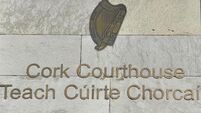OPEC set to keep pumping
Saudi oil minister Ali al-Naimi said: "Most probably there's no need to do anything to the ceiling or to the level of production."
He was speaking in Kuwait, where the group of 11 producers meets today.
Outside of Saudi Arabia, most members already are pumping as much as they can to meet rising demand from China and other consumers. Oil has jumped 45% in the past year to $59.39 (€50.25) a barrel in New York, where prices peaked at $70.85 (€59.94) after Hurricane Katrina.
OPEC president Sheikh Ahmad Fahd al-Sabah said he expects the group to continue its current policy and discuss meeting again at the end of January or early February.
A winter meeting would give the producers more time to react to an anticipated drop in demand in the second quarter.
Analyst at International Strategy & Investment, Michael Rothman, said: "The bigger, more interesting question is going to be what price is too low&&. My guess is that when it gets to $40 (€30.84), or somewhere near $40, they'll get more aggressive about trying to take supply out."
OPEC, which pumps more than a third of the world's oil, suspended its production quotas in September until the end of this year, offering to pump as much as another two million barrels a day to meet any requests from customers for more crude.
Qatari oil minister Abdullah Bin Hamad al-Attiyah said OPEC may not need to reduce supplies until the second quarter of next year, when demand typically falls.
Libyan minister Fathi Shatwan agreed, saying OPEC might need to reduce supply early in 2006 to avoid a glut.
"Usually demand goes down in the second quarter, and therefore protectively we will meet in January to study the market to see if there is a need to take action, to make a cut," he said.
Mr Rothman expects global demand for crude to grow by 1.6% in 2006, less than the International Energy Agency's forecast of 2%.
"For the first time really since 2004 it looks like they're going to be faced with having to cut back on production," he said.















